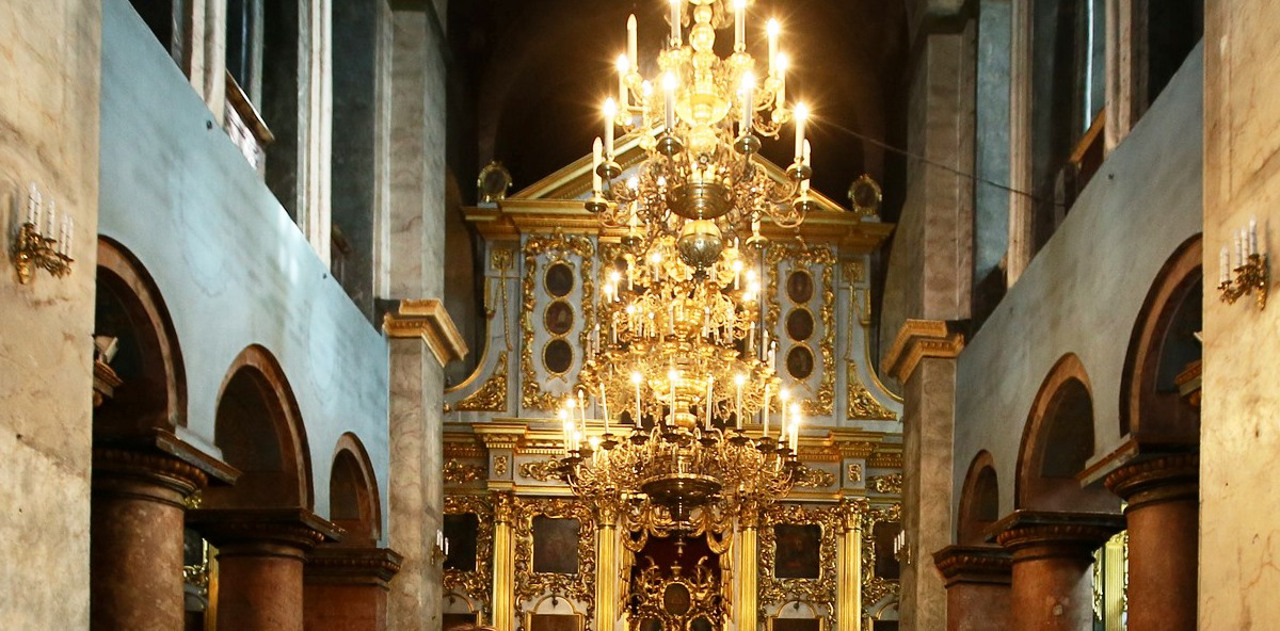Restorers are working on cleaning the ancient frescoes on the walls of the historic cathedral, which was used by the Moscow church for a long time, from soot and dirt.
Before Constitution Day, June 28, the National Architectural and Historical Reserve "Ancient Chernihiv" plans to open the Savior and Transfiguration Cathedral to visitors. Since then, it will work as a museum, the administration of the reserve reports on its official website.
The Savior-Transfiguration Cathedral is one of the oldest temples of the times of Kyivan Rus, which was founded by the first chronicled prince of Chernihiv, Mstislav Volodymyrovych, around 1033-1034. For a long time he was in the use of the UOC MP, which did not have the best effect on his condition.
"The terrible state of the cathedral demonstrates the attitude of the Moscow Patriarchate towards Ukrainian shrines. They did not appreciate the temple, distorted it, made it a place only to make money," says Natalia Rebrova, general director of the National Architectural and Historical Reserve "Ancient Chernihiv".
Now the employees of the reserve are cleaning the monument from dirt and soot on the walls, as well as from garbage in all corners, dismantling structures that were illegally erected by previous temporary users. The sooty paintings on the walls need especially careful restoration, for which the Chernihiv museum staff established cooperation with the experts of the National Reserve "Sofia Kyivska".
"During the visit, a joint survey of the condition of fragments of preserved frescoes of the 11th century, wall painting of the 19th century, icons of the iconostasis of the 18th century was carried out, and the first directions of cooperation were discussed," the reserve informs.
As reported by travels.in.ua, last year the state returned 18 objects of the National Architectural and Historical Reserve "Ancient Chernihiv", including the Savior and Transfiguration Cathedral, from the long-term temporary use of the UOC MP.
In December 2023, the UNESCO Committee for the Protection of Cultural Heritage added the cathedral to the International List of Cultural Properties Under Temporary Enhanced Protection.
Photo: facebook.com/oldchernihiv
До Дня Конституції, 28 червня, Національний архітектурно-історичний заповідник "Чернігів стародавній" планує відкрити Спасо-Преображенський собор для відвідувачів. Відтоді він працюватиме як музей, повідомляє адміністрація заповідника на офіційному сайті.
Спасо-Преображенський собор – один із найдавніших храмів часів Київської Русі, що був закладений першим літописним чернігівським князем Мстиславом Володимировичем приблизно у 1033–1034 роках. Тривалий час він перебував у користуванні УПЦ МП, що не найкращим чином відбилося на його стані.
"Жахливий стан собору демонструє ставлення московського патріархату до українських святинь. Вони не цінували храм, спотворювали його, зробили місцем лише для заробляння грошей", – каже гендиректорка Національного архітектурно-історичного заповідника "Чернігів стародавній" Наталія Реброва.
Зараз співробітники заповідника відчищають пам’ятку від бруду та нагару на стінах, а також від сміття в усіх куточках, демонтують конструкції, які незаконно поставили попередні тимчасові користувачі. Особливо ретельної реставрації потребують закопчені розписи на стінах, для чого чернігівські музейники налагодили співпрацю з фахівцями Національного заповідника "Софія Київська".
"Під час візиту спільно було проведено обстеження стану фрагментів збережених фресок ХІ століть, настінного живопису ХІХ століття, ікон іконостаса XVIII століття та обговорено перші напрямки співпраці", – інформують у заповіднику.
Як повідомляв travels.in.ua, торік держава повернула з тривалого тимчасового користування УПЦ МП 18 об’єктів Національного архітектурно-історичного заповідника "Чернігів стародавній", зокрема й Спасо-Преображенський собор.
В грудні 2023 року Комітет ЮНЕСКО із захисту культурної спадщини вніс собор до Міжнародного переліку культурних цінностей, які перебувають під тимчасовим посиленим захистом.
Фото: facebook.com/oldchernihiv



